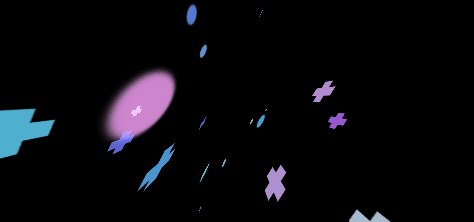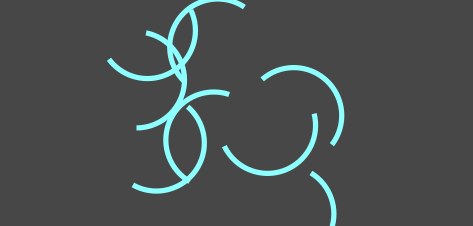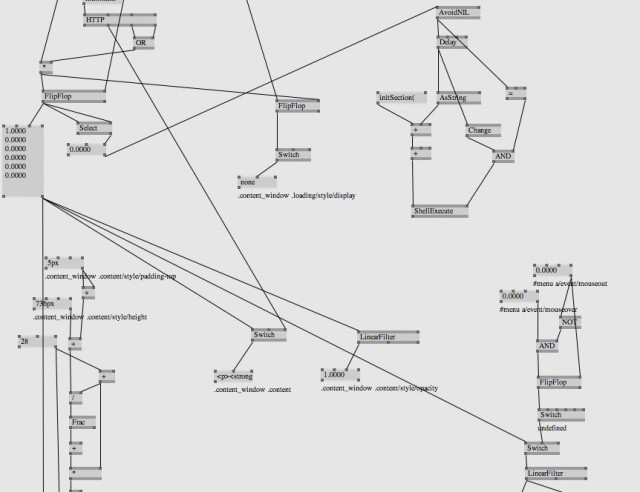Imagine access to the power of the modern Web browser – the HTML5 Canvas, hardware-accelerated graphics via WebGL, animation, and more. Now imagine that instead of writing code to access that power, you can connect modules for graphical patching.
Windows visualists may recognize the software VVVV. But whereas that tool was restricted to the capabilities of Windows, VVVV.js runs directly in a browser – any modern browser. There’s even (limited) mobile support, which should improve as mobile browsers more closely resemble desktop browsers.
Let’s just say that again: you can now make sophisticated visual and animation creations, in 3D, using graphical patching, that run in modern browser anywhere.
I could say more, but you should head to the lovely, well-documented VVVV.js site. You’ll find the patches in interactive form in the browser, so the visual output, documentation, and the patches that create everything are all visible directly in the browser. That alone is a good reason to look at the Web: finally, your documentation and your tool are one and the same. You can still switch to the desktop version when you want a little more advanced functionality and performance, but use the Web to learn, share, and prototype.
Clarification: Since my text was unclear on this, I should qualify that you cannot edit patches in the browser at this time. To produce the patch itself, you still need the Windows vvvv client. But this is an important step, technically: because the patches themselves are visible in the browser (not only their output, but their underlying structure), and because the patch format itself is stored in XML, a browser-based editor is well within the realm of possibility. This is an “alpha”-labeled release, and it’s already a compelling proof of concept. Building a Web-based editor is a logical next step.
http://vvvvjs.quasipartikel.at/
And it’s all completely free and open source, ready to fork on GitHub:
https://github.com/zauner/vvvv.js
Zauner is the original creator – awesome work, man.
I’ll take issue with this line on the VVVV.js site – “textual programming just makes you feel fat and sluggish.” Speak for yourself. I love code. I could probably feel even less fat and sluggish by coding from a standing desk – or a treadmill. But yes, graphical patching is also a wonderful metaphor for expressing ideas. Having it in the browser is fantastic.
We’ve also seen a Pd port for the Web – Chris McCormick’s nascent WebPd – so I’d say the browser is getting very interesting, very fast.
Now, the obligatory spaghetti patch shot. Don’t be afraid if you haven’t worked with patching before – it looks far, far scarier than it is. Each object represents a basic building block in the larger creation, which is why there are so many boxes and lines.



